





Mice
How to Trap Mice
Using a live trap for the capture and removal of mice is a humane alternative to setting snapping traps or applying toxic rodenticides. Use the following step-by-step instructions to get the job done quickly and efficiently.
1 Make Arrangements
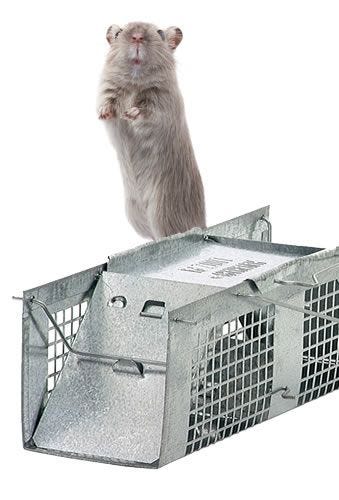
The best live mouse traps are small, economical and easy to use/reuse to catch several mice. There are two types of live mouse traps from which to choose, depending on your preferences:
| Steel Cage Trap |
|
| Plastic No-See Trap |
|
2 Determine Trap Placement

A mouse rarely travels outside of a small range (about 10 feet in diameter), so it's important that you place your live trap within that range.
In order to determine your mouse's range, seek out signs of mice including:
- gnaw marks on surfaces or food products
- smudge marks along walls or wires
- mouse droppings
- nests or signs of nesting
Mice generally travel along walls, using them as guides. It's important that you place your trap on a level surface along the wall closest to damage.
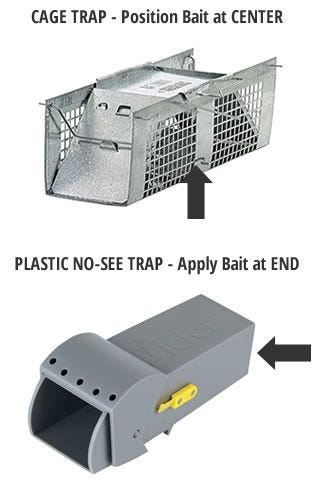
3 Bait Your Trap
- One of the best baits to use is peanut butter because of its high fat and protein content as well as its light weight and spreadability.
- When using a cage trap with two doors, spread the bait directly onto the trigger plate.
- When using a plastic trap that relies on balance, smear the bait in the back end of the trap to ensure a mouse triggers the door closed.
- Give the mouse a taste of what's inside by putting a tiny amount of bait at the trap entrance(s).
For more expert baiting tips, read How To: Mouse Baits »
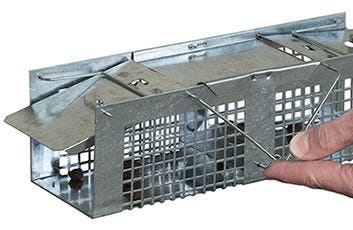
4 Set Your Trap
When you are ready to catch a mouse, carefully set your trap. Mouse traps are extremely sensitive, since they need to react to tiny rodents. It's important that you do not disturb the trap once it's set.
5 Monitor Your Trap

Monitor your trap, and keep an eye out for signs that you've caught a mouse:
- In a cage trap: the doors are closed and a mouse is visible inside the trap.
- In a plastic trap: the door is closed shut.
A mouse needs to eat several times per day, so it's important that you release your critter shortly after it's trapped. Never leave a mouse inside a trap for extended periods of time.
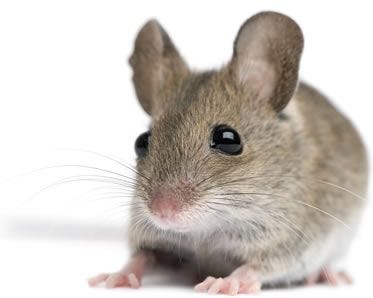
6 You've Caught a Mouse!
- Wear gloves whenever handling your trap to avoid contact with a mouse.
- If local laws permit, release your mouse in a habitable environment, at least 5 miles from your home.
- Disinfect the trap after each use to prevent the spread of germs or harmful diseases.
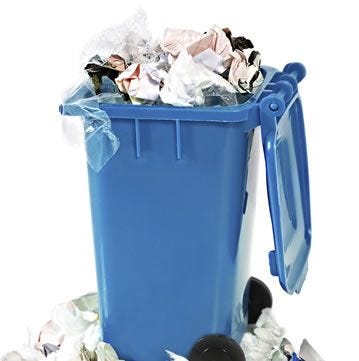
7 Reduce Mouse Attractants
After removing mice from your home, prevent them from returning by eliminating the availability of food. Steps you can take include:
- storing all food in rodent-proof containers
- cleaning your home regularly - scrub surfaces and mop floors
- immediately sweeping up crumbs and cleaning spills thoroughly
- cleaning up fallen berries, fruits and seeds surrounding your home
Removing clutter, piles of clothing, boxes and other fibrous items from closets will also help reduce nesting materials.
Expert Tips
- Wear gloves whenever handling your mouse trap. Mice will hesitate to approach a trap that has any trace of human scent on it.
- An effective way to catch a mouse is to place a trap directly along the mouse's travel path. One way to identify such a path is to sprinkle talcum powder on the ground, along the walls around mouse damage. Wait about a day or so, and check the powder for mice tracks. Mice generally use the same travel paths time after time, so it's almost certain that a mouse will return to the exact spot where tracks are found.
- Before relocating a mouse, check with your local wildlife commission to determine relocation laws in your area.
- After removing mice with a live trap, seal all holes and cracks in your home or business building's interior, exterior and foundation to keep mice from getting inside. Remember, mice can fit through cracks the size of half of a dime, so be diligent when inspecting your home.
- While trapping mice is a very effective way to remove them from your home, it may be difficult to know whether you've trapped them all. One way to help drive the rest of your mice out and keep mice from returning is by using an ultrasonic mouse repellent.
